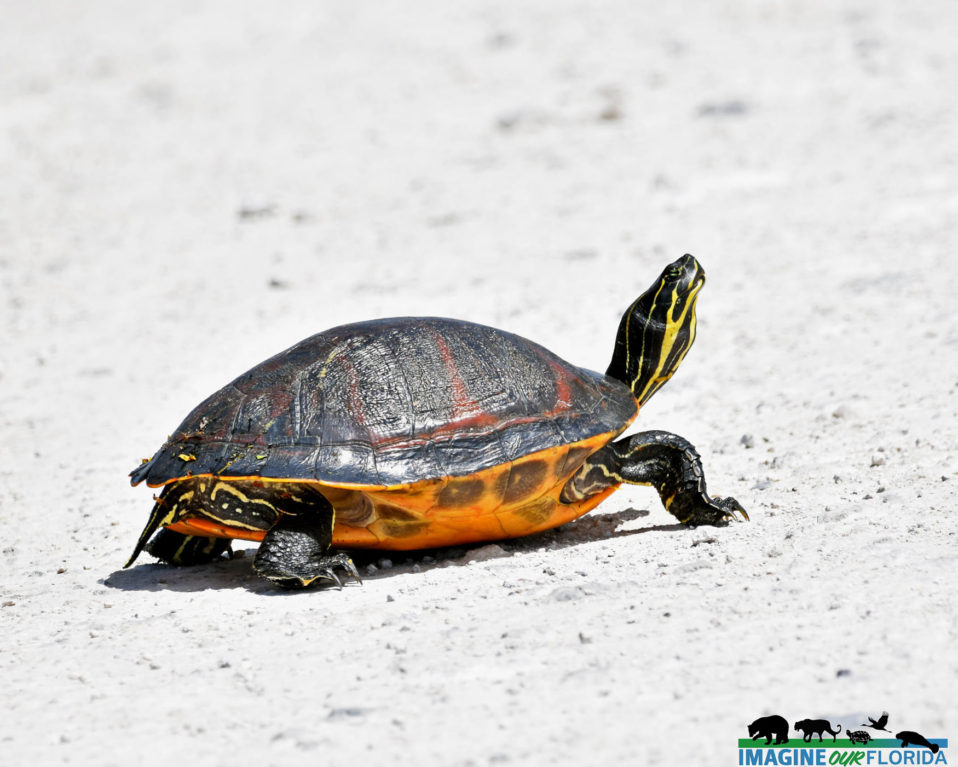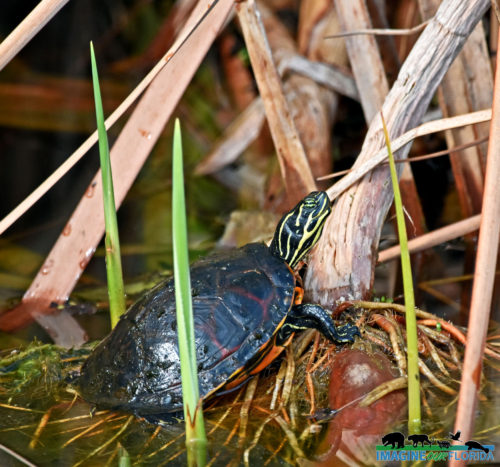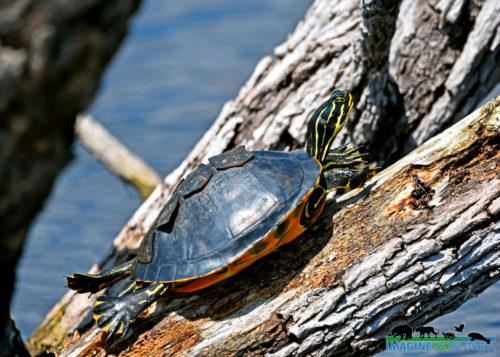Florida Red-bellied Cooter
Peninsula Cooter
Striped Mud Turtle
Striped Mud Turtles (Kinosternon baurii) are small turtles that grow to only 4″ to 5″ long. They usually have 3 visible stripes on their shells and 2 yellow stripes on each side of their faces. These native semi-aquatic turtles live in and near brackish and freshwater in ditches and ponds. Dinner consists of algae, snails, insects, worms, seeds, and carrion.
Females may travel up to 820 feet away from the wetlands to lay a clutch of 1-6 eggs. Temperature determines the sex of the embryo. The embryo may pause its development until the correct temperature is reached. Incubation lasts from 2 1/2 to five months. The hatchlings are about 1′ long and may take more than a year to leave the nest.
Striped Mud Turtles depend on waters with low saline content. This makes them especially vulnerable in the Lower Keys, where sea level rise is expected to cause saltwater intrusion into freshwater habitats. More intense storms will cause many low-lying areas to be inundated with saltwater, thus making the ecosystem uninhabitable for Striped Mud Turtles. Human-caused pollution and oil spills also threaten these little turtles.
Striped Mud Turtles spend much of their time underwater and can often be seen in shallow waters. When in wetlands, keep an eye out for movement in mud, marshes, and wet fields and you may meet a new wild turtle friend.
Photo Credit: Andy Waldo.
Florida Softshell Turtle
This Florida Softshell Turtle (Apalone ferox) made her way into a human neighborhood. Softshell Turtles will lay their eggs under the edge of a driveway or sidewalk. The sun will warm the concrete and keep her eggs warm until they hatch. If you see a Softshell Turtle in your neighborhood, give her space, and she will make her way back to the pond where she makes her home.
Softshell Turtles usually eat snails and small fish but have been known to eat waterfowl such as ducks and small herons. Florida Softshell turtles will hide in the sand at the bottom of lakes and streams and ambush passing schools of fish for lunch or dinner. Softshells take 10 years to reach full maturity. They play the role of predator and scavenger. Animals who prey on these turtles are raccoons, bears, other turtles, skunks, snakes, eagles, otters, armadillos, and alligators. Their biggest predators are humans.
Florida Box Turtle
Florida Box Turtle (Terrapene carolina bauri). This cute little girl is a great example of what the Florida box turtle looks like. Florida box turtles are a terrestrial species that typically inhabit damp forests and marshes. They can be found from the Keys north to the very southern portion of Georga. Their shell is dark brown to black with yellow radiating stripes.
The males have a concave plastron, and both males and females have a hinged shell, which allows them to close up in their shell fully.
They are omnivores, feeding on fruits, mushrooms, and various bugs, and other small creatures. They are a protected species in Florida. The selling of them is prohibited in the state, and you may not be in possession of more than two box turtles. Habitat loss and road mortality are two major causes of their population decline.



















Recent Comments